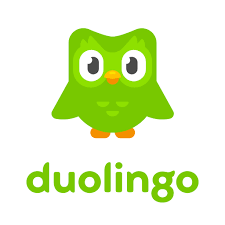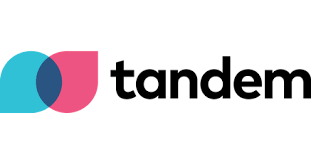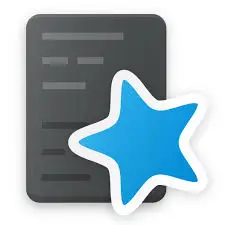Learning Spanish unlocks a world of vibrant cultures, career opportunities, and personal connections, with over 500 million native speakers worldwide. Whether you’re ordering tapas in Seville, negotiating a deal in Bogotá, or enjoying a telenovela, these free apps offer powerful tools to build vocabulary, master grammar, and speak confidently. From interactive games to immersive audio lessons, these apps empower beginners, intermediates, and advanced learners to achieve fluency with ease.

1. Duolingo
Duolingo transforms Spanish learning into a vibrant, game-like adventure with short lessons blending reading, writing, listening, and speaking. Its Spanish course, among the most comprehensive, teaches everything from greetings like “¡Buenos días!” to complex subjunctive forms. Speech recognition helps you nail pronunciation for phrases like “¿Puedo pedir un taco?”, while streaks and leaderboards keep you hooked.
Practice daily to prepare for a trip or boost your resume. Its colorful interface and community forums, praised on X for their engagement, make learning feel like a fun challenge. Duolingo’s ad-supported free model ensures full access to lessons, perfect for building a strong Spanish foundation.
Key Highlights
- Gamified lessons with streaks and badges make learning addictive and motivating.
- Speech recognition refines pronunciation for confident, real-world speaking.
- Comprehensive Spanish course with a vibrant interface engages all learners.
Who It’s Best For
- Beginners seeking a fun, structured introduction to Spanish
- Casual learners who thrive on daily, bite-sized practice

2. Busuu
Busuu delivers a classroom-like Spanish course with free CEFR-aligned lessons, teaching essentials like introductions and travel phrases. Clear grammar explanations demystify ser vs. estar, while interactive exercises build vocabulary and speaking skills. The free version includes community feedback, letting native Spanish speakers correct your sentences or pronunciation.
Use Busuu to master dialogues for ordering at a taquería or navigating a Spanish market. Its sleek design and “weak words” reviews, lauded in reviews, ensure steady progress. The robust free content makes it a top choice for learners who value structure and native input.
Key Highlights
- CEFR-aligned lessons provide a structured path for measurable progress.
- Native speaker feedback fosters practical writing and speaking skills.
- Clear grammar explanations and review tools enhance retention and engagement.
Who It’s Best For
- Learners who prefer a structured, classroom-like approach
- Students seeking free native speaker interaction

3. Brainscape
Brainscape is a flashcard app that accelerates Spanish vocabulary learning with spaced repetition, offering free access to thousands of user-created Spanish decks. Study words like “sol” or phrases like “¿Cómo te llamas?” with audio from native speakers, covering topics from travel to advanced grammar. Its adaptive algorithm prioritizes weaker cards for efficient retention.
Create custom decks for a presentation or review shared decks during a commute. Brainscape’s clean interface and proven effectiveness, praised in reviews for its 14,000+ word database, make it a must-have for vocabulary-focused learners. Its free model ensures broad access to high-quality content.
Key Highlights
- Spaced repetition ensures long-term retention of Spanish vocabulary.
- Free access to thousands of native-speaker-voiced decks enhances learning.
- Adaptive algorithm tailors study your weaknesses for efficient progress.
Who It’s Best For
- Learners focused on rapid vocabulary acquisition
- Students who enjoy flashcard-based, self-paced study

4. Tandem
Tandem connects you with native Spanish speakers for free text, voice, and video chats, fostering real-world conversational practice. Its active Spanish community lets you practice phrases like “¿Qué planes tienes hoy?” with speakers from Madrid to Buenos Aires. In-chat translation, pronunciation tools, and corrections help you improve seamlessly during conversations.
Chat about Spanish culture or prepare for a job interview with a native partner. Tandem’s social, immersive platform, praised for its real-time practice, feels like a global language café, ideal for learners eager to speak naturally.
Key Highlights
- Direct chats with native Spanish speakers enable authentic practice.
- In-chat translation and correction tools streamline conversational learning.
- Global community fosters cultural exchange and engaging dialogue.
Who It’s Best For
- Learners prioritizing conversational fluency
- Social learners who enjoy connecting with native speakers

5. Language Transfer
Language Transfer provides free audio lessons that teach Spanish through intuitive “thinking” exercises, focusing on logical grammar understanding. Its Spanish course explains verb conjugations and sentence structures in a podcast-like format, helping you form sentences like “Ella vive en España” naturally. With no visuals, it’s pure audio immersion.
Listen while jogging or cooking to grasp grammar effortlessly. X users praise its clarity and no-cost model, making it a unique tool for learners who want to understand the “why” behind Spanish without rote memorization.
Key Highlights
- Free audio lessons with no ads ensure accessible, high-quality learning.
- Logical grammar breakdowns foster intuitive understanding.
- Conversational format encourages active thinking for natural acquisition.
Who It’s Best For
- Auditory learners who prefer audio-based study
- Students seeking deep grammar insights without visuals

6. Memrise
Memrise makes Spanish vocabulary stick with free lessons featuring native speaker videos and spaced repetition. Learn phrases like “Quiero bailar flamenco” through clips of locals in real settings, from Seville streets to Santiago markets. Community-created content adds variety, covering slang to travel essentials, immersing you in authentic accents.
Practice colloquial terms to chat like a local or survival phrases for a trip. Memrise’s playful interface and memory-focused approach, lauded for its immersion, make it a top pick for sounding natural in conversation.
Key Highlights
- Native speaker videos deliver authentic pronunciation and real-life dialogues.
- Spaced repetition ensures long-term vocabulary retention.
- Community courses offer engaging, diverse content for all levels.
Who It’s Best For
- Learners aiming for conversational fluency
- Students who want to master practical vocabulary

7. Beelinguapp
Beelinguapp boosts Spanish reading and listening with free parallel-text stories, showing Spanish and your native language side-by-side. Free content includes fairy tales, news, and short stories, narrated by native speakers. Follow karaoke-style audio to practice pronunciation, mastering phrases like “Había una vez” in context.
Read a folktale during lunch or listen to news to improve comprehension. Beelinguapp’s storytelling approach, praised for its cultural depth, immerses you in Spanish narratives, perfect for learners who love stories.
Key Highlights
- Parallel texts with native audio create an immersive reading experience.
- Diverse content like fairy tales and news keeps learning engaging.
- Karaoke-style audio enhances listening and pronunciation skills.
Who It’s Best For
- Learners focused on reading and listening comprehension
- Story enthusiasts who enjoy narrative-based learning

8. Clozemaster
Clozemaster teaches Spanish through thousands of free fill-in-the-blank sentences, building fluency with exercises like completing “Nosotros __ en la playa” with “jugamos”. Its gamified format, with points and leaderboards, motivates you to master vocabulary and grammar in context, ideal for intermediate learners.
Practice during downtime to transition from basic phrases to fluent speech. Clozemaster’s contextual approach, highlighted in reviews for its effectiveness, offers extensive free content, making it a go-to for immersive learning.
Key Highlights
- Contextual sentence-based learning deepens vocabulary and grammar understanding.
- Thousands of sentences provide extensive, free practice.
- Gamified format with leaderboards keeps learners motivated and engaged.
Who It’s Best For
- Intermediate learners building fluency
- Students who enjoy contextual, sentence-based practice

9. DuoCards
DuoCards uses spaced repetition flashcards to teach Spanish vocabulary, with free access to shared decks covering words like “casa” or phrases like “¿Dónde estás?”. You can create limited custom decks or use media integration to build flashcards from Spanish YouTube videos or articles, adding context to your study.
Study on the go to prepare for a quiz or conversation. DuoCards’ flexible, media-rich approach, noted for its customization, suits learners who want tailored vocabulary practice, with free shared decks ensuring broad access.
Key Highlights
- Spaced repetition ensures long-term vocabulary retention.
- Media integration with YouTube and articles adds contextual learning.
- Free shared decks and limited custom creation enable flexible study.
Who It’s Best For
- Learners focused on vocabulary building
- Self-directed students who enjoy customizable tools

10. Wlingua
Wlingua offers free CEFR-aligned Spanish lessons, distinguishing between European and Mexican Spanish, with audio from native speakers. Learn beginner topics like greetings or verbs, practicing phrases like “Gracias por la comida” with accurate pronunciation. Interactive exercises make lessons dynamic, covering grammar and vocabulary.
Tailor your accent for a trip to Barcelona or Cancún. Wlingua’s regional focus and structured lessons, praised for cultural nuance, provide a clear path for beginners seeking authentic practice.
Key Highlights
- European vs. Mexican Spanish options cater to regional preferences.
- CEFR-aligned structure ensures clear, measurable progress.
- Native speaker audio enhances pronunciation and cultural authenticity.
Who It’s Best For
- Learners who want regionally specific Spanish practice
- Students seeking structured, beginner-friendly lessons

11. HiNative
HiNative lets you ask native Spanish speakers unlimited free questions, from grammar clarifications like “Why use ‘por’ here?” to pronunciation checks via audio uploads. Its active Spanish community provides quick, reliable feedback, helping you understand cultural nuances or slang like “¡Qué chido!”.
Get feedback on a speech or clarify phrases for a casual chat. HiNative’s community-driven approach, lauded on X for its cultural insights, is ideal for learners seeking real-time, authentic input.
Key Highlights
- Direct native speaker feedback provides authentic, real-time answers.
- Audio uploads enable pronunciation checks for accurate speaking.
- Cultural focus teaches nuances, making learning practical and engaging.
Who It’s Best For
- Learners seeking cultural and linguistic clarification
- Intermediate to advanced students wanting native feedback

12. AnkiDroid Flashcards
AnkiDroid is a free, open-source flashcard app with spaced repetition, offering shared Spanish decks for vocabulary, grammar, and phrases like “Voy a la tienda”. Create custom decks for specific needs, like business Spanish, and sync with AnkiWeb for seamless study across devices.
Study before a test or during a break to lock in vocabulary. AnkiDroid’s flexibility and retention power, praised for its shared content, make it a top choice for self-directed learners.
Key Highlights
- Highly customizable flashcards allow tailored, focused learning.
- Spaced repetition ensures powerful, long-term vocabulary retention.
- Extensive shared decks provide free, diverse Spanish content.
Who It’s Best For
- Vocabulary-focused learners
- Self-directed students who prefer customizable study

13. FluentU
FluentU teaches Spanish through authentic videos like movie trailers and vlogs, with interactive subtitles. Its free 14-day trial offers limited access to Spanish content, letting you learn phrases like “¡Es increíble!” in context. Videos include flashcards and quizzes to reinforce vocabulary, immersing you in natural speech.
Watch a Spanish talk show to absorb colloquialisms. FluentU’s media-driven approach, praised for engagement, suits learners who love entertainment-based study, with the trial providing a taste of its immersive tools.
Key Highlights
- Real-world video content makes learning contextual and engaging.
- Interactive subtitles and quizzes reinforce vocabulary effectively.
- Personalized flashcard system tailors study to your learning needs.
Who It’s Best For
- Learners who enjoy studying through videos and media
- Intermediate students seeking contextual learning

14. Lirica – Learn Languages with music
Lirica teaches Spanish through popular music, like reggaeton and Latin pop, with a 7-day free trial offering access to select songs. Lyrics from artists like Bad Bunny are paired with translations and grammar notes, explaining phrases like “Vámonos pa’l party”. Interactive exercises let you sing along, embedding vocabulary in context.
Learn while enjoying a J Balvin track. Lirica’s music-based, cultural approach, praised for its fun vibe, immerses you in Spanish through songs, ideal for music lovers.
Key Highlights
- Music-based learning with lyrics creates a fun, cultural experience.
- Cultural and grammar insights deepen understanding of Spanish songs.
- Engaging format for music fans fosters immersive vocabulary learning.
Who It’s Best For
- Music enthusiasts who learn through songs
- Learners seeking cultural immersion

15. LingQ: Language Learning
LingQ offers free Spanish lessons through immersive reading and listening, with thousands of texts like stories, articles, and podcasts. Highlight unknown words to create flashcards, practicing phrases like “Disfruto leer libros” in context. The free version limits total word saves to 20 LingQs, providing ample content for beginners.
Read a Spanish article or listen to a podcast to boost comprehension. LingQ’s content-rich platform, noted for its flexibility, suits learners who love diving into authentic materials.
Key Highlights
- Immersive reading and listening with authentic Spanish texts engage learners.
- Flashcard creation from highlighted words boosts vocabulary retention.
- Vast library of free content supports flexible, self-paced study.
Who It’s Best For
- Learners who prefer reading and listening to authentic materials
- Self-directed students seeking content-rich study
Conclusion
These 15 free Spanish learning apps of 2025 offer diverse tools to master Spanish, from Duolingo’s gamified lessons to Tandem’s native speaker chats. Whether you’re learning through music with Lirica, studying grammar with Busuu, or building vocabulary with Brainscape, there’s an app for every learner. Download one or combine several from the Google Play Store, set your goals, and start speaking Spanish confidently. ¡Tu aventura en español comienza ahora!
FAQs
What Makes a Good Free Spanish Learning App?
A great free app offers robust content, like lessons, native speaker input, or interactive exercises, tailored to Spanish learners. Look for features like speech recognition, cultural insights, or spaced repetition to match your goals.
Are Free Spanish Apps Effective for Fluency?
Yes, apps like Duolingo, Language Transfer, and AnkiDroid provide comprehensive free tools for vocabulary, grammar, and speaking. Combine them with consistent practice for faster fluency.
How Do I Stay Motivated with Free Spanish Apps?
Choose apps with gamification (Duolingo, Clozemaster) or engaging content (Lirica, FluentU) to stay hooked. Set daily goals, track progress, and use Tandem for real-world conversations.
Which Free App Is Best for Spanish Beginners?
Duolingo and Busuu excel for beginners with structured lessons and clear grammar. Brainscape is great for vocabulary, while Lirica adds fun through music.
How Do I Choose the Right Free Spanish App?
Consider your level and style. Beginners may prefer Duolingo’s simplicity, intermediates might choose Clozemaster, and conversation learners can use Tandem. Test apps to find your fit.
Can Free Apps Replace Spanish Classes?
Free apps are excellent supplements, offering flexibility and practice. For full fluency, pair them with classes or native interactions via Tandem to master speaking and cultural nuances.

Leave a Reply